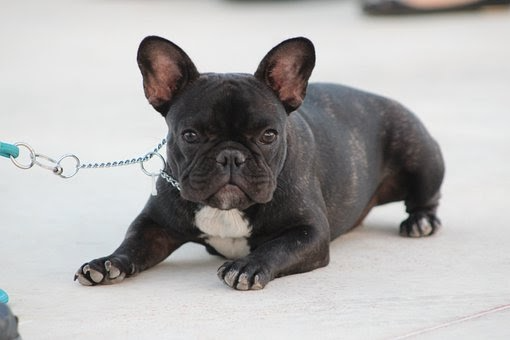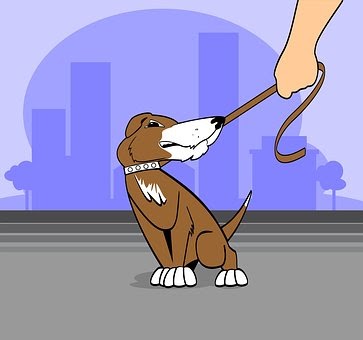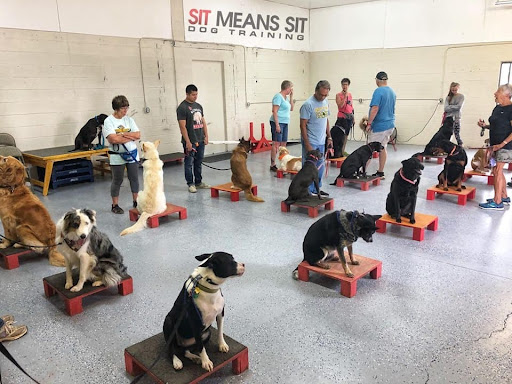Puppy Obedience Training
Summary:
Puppies need discipline and training. Unfortunately, a lot of new dog owners wonder how they will even begin to train their puppy. Some people get so overwhelmed at the prospect of having an untrained puppy that they decide to give up on it before they can even begin.
But training a new puppy doesn't have to be scary, and it doesn't have to be hard work if you know where to start and what tools you need.
Puppy training is the process of teaching a dog how to behave in a way that allows them to live in our homes and interact with our families. As we work to teach our puppies manners and obedience, we also build a bond with them.
It's important to remember that not all dogs are the same, and you'll need to tailor your training program as you go. So, here are some tips on how to train a puppy in the most appropriate way without failing.
What is Puppy Obedience Training?
Training a new puppy doesn't have to be scary, and it doesn't have to be hard work if you know where to start and what tools you need.
Puppy obedience training is a method of teaching your puppy different behaviors. The goal of this training is to increase the dog's ability to interact with people, other dogs, and their surroundings in a more appropriate way.
The training will teach the pet how to behave in mass and in single-dog situations. Obedience training helps you to be able to rely on your dog's behavior when asked to perform certain actions by you or your family. Your puppy will learn that he is not without a sense of responsibility.
One of the most important things you can do for your dog as a pet owner is to train your dog well. So, start training them at 7 to 8 weeks of age so that they will be more likely to obey commands from an early age. However, puppies have short attention spans and won't really listen unless they get treats or practice often.
Choose How You're Going to Train Your Puppy
When it comes to training a dog, you must know what method you're going to use. In the world of dog training, there are various methods that different dog trainers and experts use. However, these are the 2 most common ones: aversive-based method and positive reinforcement.
The process of training a dog using aversive methods. These methods are mainly negative reinforcement and punishment, including the use of physical force to control behavior. Aversive training methods also include the removal of things that the animal enjoys, such as food, attention or activity. As a result, these dogs may exhibit fear and anxiety.
In contrast, in positive reinforcement training, the dog is rewarded with something they enjoy when performing the desired behavior. Positive reinforcement tactics are also used to increase desirable behaviors and to diminish unwanted behaviors. Thus, both positive and negative reinforcement is used to help train a dog to behave in the desired manner.
Some people believe that both reinforcement types are an effective way of training pets, but the reality is that positive reinforcement is more likely to result in a better-behaved pet.
Get Rid of Common Behavior Problems
Before you start training your puppy, it's essential that you take care of some common behavior problems like:
- Nipping
- Jumping
- Chewing
- Barking
All of these are normal behaviors for dogs to have when in the presence of other dogs. However, it's important to teach them that these behaviors are not appropriate around people.
It can be difficult teaching them to understand this because dogs have a natural tendency to want to run around and bark when they are with other dogs, but with proper training and management, it can be done.
For example, when it comes to nipping, it is a natural behavior that puppies use to explore their environment. It's cute when they do this at 7 weeks old, but it's less so when the puppy is grown to around 3 to 4 months old.
To train him to stop nipping:
- Play with your puppy. When he nips, you say "no" in a loud voice and then walk away from him.
- If he stops nipping, give him treats and lots of praise. If he continues, repeat the technique and follow up with another no and walk away again.
- Keep doing it, and your puppy will understand that nipping is not acceptable.
Jumping is another major and common problem in puppies. They instinctively jump out to greet their mothers, so they will also jump out to greet their humans too. This behavior, most of the time, can be irritating and can even be dangerous, especially for older adults. So you must teach them that it is not acceptable.
To train your puppy to stop jumping: every time you come in and your puppy jumps at you, just turn away from your dog and ignore him, avoid eye contact and stop giving him any attention. And the next time he does not jump at you, reward him with treats and praise. Repeat the process until your dog completely stops jumping at you.
Things to Know Before Training Your Puppy
Here are some tips that you should keep in mind while training your puppy:
Be Consistent
Consistency is key to training your new puppy. It's essential that you always have the same tone and intensity of voice, as well as the same game plan in mind. If you vary your schedule and your tone, you'll confuse the heck out of your pup.
It's also great to have a set time to play, walk, and train with them each day. For instance, let's say that for every 15 minutes of playing time, you give them at least 10 minutes of training.
This can help keep their focus and enthusiasm high during that time period. But, of course, this plan can be tweaked as they get used to it!
Be Patient
Be patient! Training your new puppy will take time and effort. And it might not always be as easy as you think it should be. But stick with it! The more consistent you are with training, the better the results.
Your dog might be having trouble with a specific part of the training process, so take a step back and review what they already know. Then, practice at this level before trying to move on to more challenging things. You'll both succeed eventually!
Training Sessions Should Be Brief
The most important thing when training a new puppy is to keep sessions short. Less than twenty minutes, in fact. This is because puppies usually have short attention spans, plus they just won't be as focused if you train for more than about twenty minutes at a time.
The best way to avoid this challenge is to break down each training session into chunks of around five minutes and come back later with more training opportunities during the day. You'll notice your dog has more focus and listens better in the shorter sessions because he doesn't lose interest before getting rewarded!
Make Sure You Use the Same Commands
You'll be teaching a lot of commands to your dog, so it's crucial that you do not confuse them. Make sure you use just one word in every command that you're going to use.
For example, if you're to train your puppy to "SIT", then you should only use a word or two such as "SIT DOWN" or simply "SIT" and stick to it. However, avoid overdoing it by using sentences like "SIT DOWN, or you won't get a treat,". Such inconsistency will confuse your pet, and their response might not be what you want it to be.
Basic Commands That Every Dog Should Know
Every dog should know basic commands. These are commands that every dog should know because they make life easier for you and your pet. This includes basic commands like
- Name Recognition
- Sit
- Down
- Come
- Stay
- Leave It
By teaching basic commands, you are providing your dog with the knowledge necessary to become a well-behaved companion.
Just for instance; If your dog does not know how to do a particular command, he'll be lost once he's off his leash, so knowing these will come in handy when out walking with your pup.
Consider Professional Training Classes
If you're finding it hard and looking for help training your dog, a good class or course will help you learn the fundamentals while also providing you with the tools needed to train your dog. Taking a dog training class, offered by some of the most trusted names in the industry, is one of the best ways to make sure you are doing it right.
The keys to success when choosing a class are making sure that it is reputable and covers everything you need. If it doesn't fit your schedule or budget, there is no sense in taking a class. Know what you want out of the class before enrolling so that you can get the most out of it every time. Also, you want to make sure that the trainer or school is accredited. The best options will have classes that are tailored to fit all your needs.
There are also many online dog training programs from professional dog trainers that'll help you train your dog, or else you can hire a professional dog trainer who got trained by companies like Sit Means Sit classes to come to your house and train your dog for you.
But make sure you do enough research before hiring anyone and know about their training philosophy to ensure that the knowledge they are giving your pet keeps up with what you need from your puppy.
Anyways, As you can see, there are enough options out there that can help make life with a new puppy easier, but remember to just take things one step at a time. With any luck, by following these simple steps, you'll be able to avoid some of the common mistakes people make while training their dog and have an enjoyable experience training your pup from the start!
Researched by: Jeff Grill




